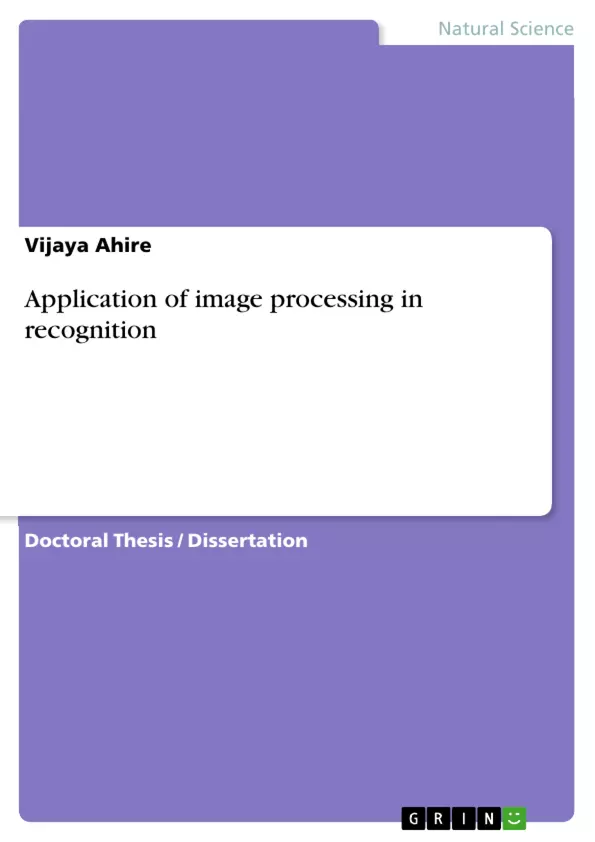Lot of research in the field of human recognition is being carried out. Gait recognition is a relatively new approach, which is gaining momentum in biometrics. For the application of image processing in recognition this paper will propose a simple approach, namely the Silhouette Vector.
The Silhouette Vector is the distance of boundary points from the centroid of the silhouette, as it rotates 360 degrees. In addition to the silhouette vector, the silhouette image was divided into three equal parts vertically. Some statistical properties of these parts were computed, added to the silhouette vector and given to the PCA training system. Training was performed using silhouette and rectangular vectors for each subject. For testing the system, the nearest neighbour method was used as it is one of the simplest algorithms used for classification problems. The test subject is assigned to the class which is the minimum Euclidean distance from it. Inclusion of the additional features has improved the system performance greatly. Cumulative match score was used to analyse the system performance.
Inhaltsverzeichnis (Table of Contents)
- Abstract
- List of Figures
- List of Tables
- Abbreviations
- 1 Introduction
- 1.1 Biomertics
- 1.2 Gait as Biometrics
- 2 Related Literature Review
- 2.1 Model Free Approach
- 2.2 Model Based Approach
- 3 Gait Recognition System
- 3.1 Literature used for Implementations
- 3.2 Database Available
- 3.2.1 CASIA Gait Database
- 3.3 Pre-processing
- 3.4 Quality Factor Q (Our Minor Contribution)
- 3.5 Feature Extraction
- 3.5.1 Gait Cycle Measurement.
- 3.5.2 Silhouette Vector Measurement
- 3.5.3 Rectangular Features(An Experiment!)
- 3.6 Principal Component Analysis
- 4 Recognition Scheme
- 4.1 Testing
- 4.1.1 Introduction.
- 4.1.2 Biometrics Evaluation Terms
- 4.2 Template Matching
- 4.1 Testing
- 5 Performance Evaluation
- 5.1 Receiver Operating Curve-ROC
- 5.2 Cumulative Match Characteristic Curve-CMC
- 5.3 Other Methods
- 6 Results and Conclusions
- 6.1 Results
- 6.2 Conclusions
- 7 Future Work
- 7.1 Future Work Plan
Zielsetzung und Themenschwerpunkte (Objectives and Key Themes)
This seminar paper explores a novel approach to human recognition using gait analysis, a relatively new and increasingly popular area in biometrics. The paper aims to present a simple and effective solution to the problem of gait recognition by building upon existing research on the Silhouette Vector, a feature that describes the distance of boundary points from the centroid of a rotating silhouette. The paper's objective is to demonstrate the effectiveness of this method by integrating additional features based on the silhouette image, thereby enhancing the accuracy of the recognition system.
- Gait Recognition as a Biometric Approach
- The Silhouette Vector Feature
- Integration of Additional Features for Improved Accuracy
- Evaluation of the Recognition System Using Statistical Measures
- Potential for Future Research and Development
Zusammenfassung der Kapitel (Chapter Summaries)
- Chapter 1: Introduction This chapter introduces the field of biometrics and specifically focuses on gait recognition as a promising biometric modality. It highlights the importance of reliable human identification methods in various applications.
- Chapter 2: Related Literature Review This chapter reviews existing research on gait recognition, exploring both model-free and model-based approaches. It analyzes the strengths and weaknesses of different methodologies.
- Chapter 3: Gait Recognition System This chapter delves into the specific gait recognition system proposed in the paper. It discusses the database used for training and testing, the pre-processing steps involved, and the innovative feature extraction method using the Silhouette Vector and additional rectangular features.
- Chapter 4: Recognition Scheme This chapter details the recognition scheme used in the system, focusing on the testing process and the template matching technique for identifying individuals.
- Chapter 5: Performance Evaluation This chapter evaluates the performance of the proposed gait recognition system using various statistical metrics. It analyzes the system's accuracy and effectiveness in different scenarios.
- Chapter 6: Results and Conclusions This chapter presents the results of the system evaluation and draws conclusions about the effectiveness of the proposed approach. It also discusses the potential benefits and limitations of the system.
Schlüsselwörter (Keywords)
This research paper focuses on the application of image processing techniques in human recognition, specifically through gait analysis. The core concepts include gait recognition as a biometric modality, feature extraction using the Silhouette Vector and additional features, principal component analysis (PCA) for training, and performance evaluation using metrics like the Cumulative Match Characteristic (CMC) curve. The paper's research contributes to the field of biometrics, particularly in developing robust and efficient gait recognition systems.
- Quote paper
- Vijaya Ahire (Author), 2019, Application of image processing in recognition, Munich, GRIN Verlag, https://www.grin.com/document/462126



